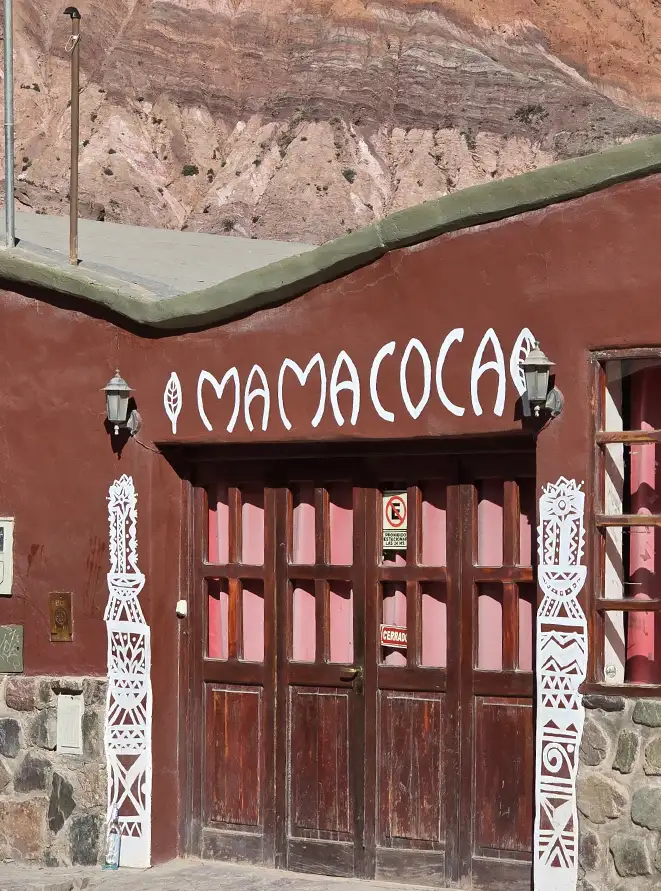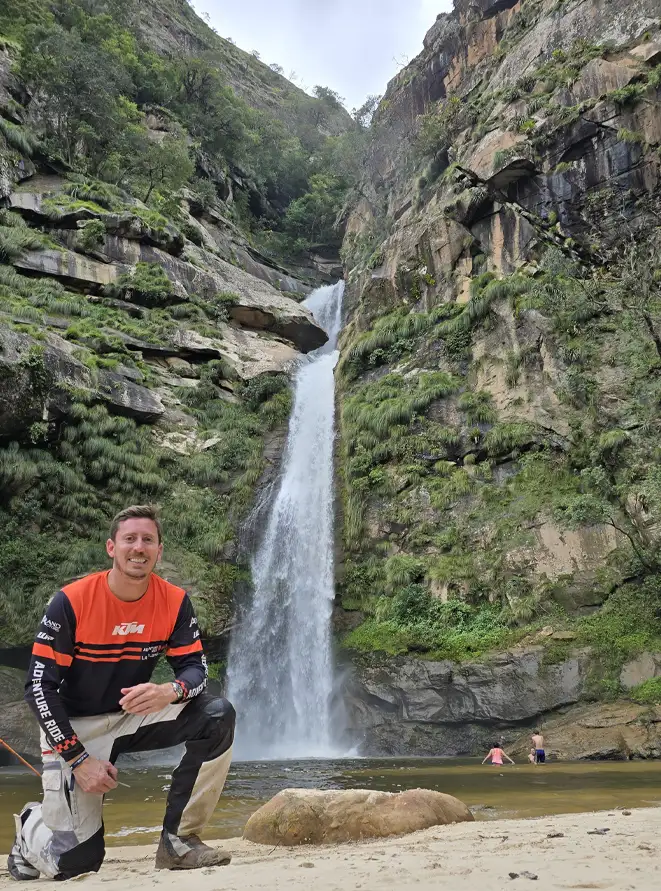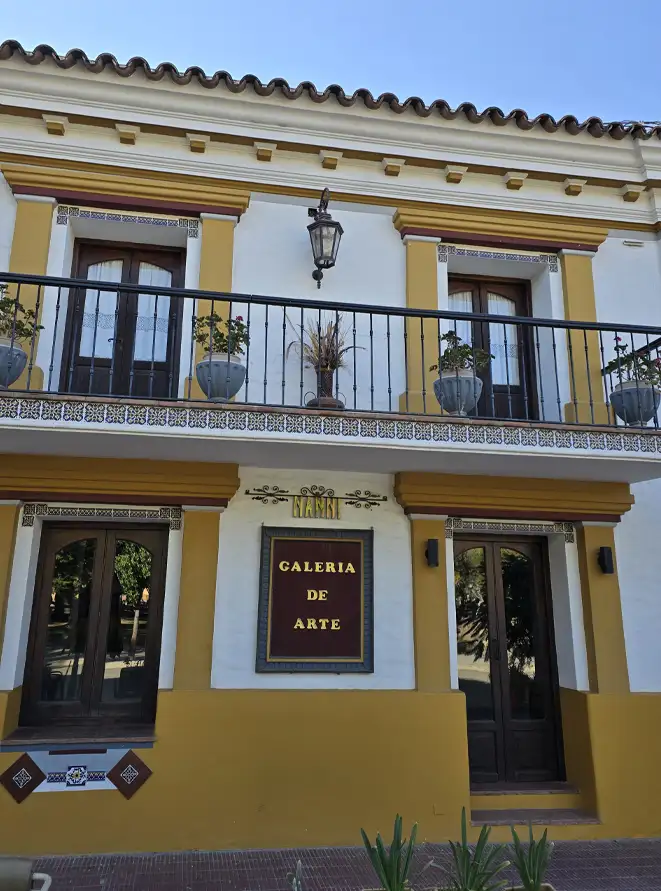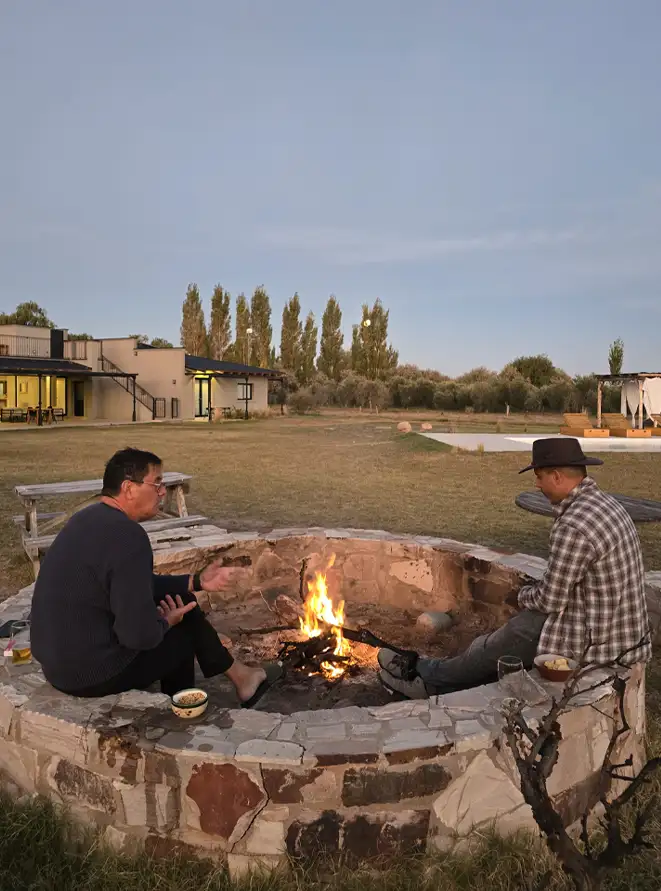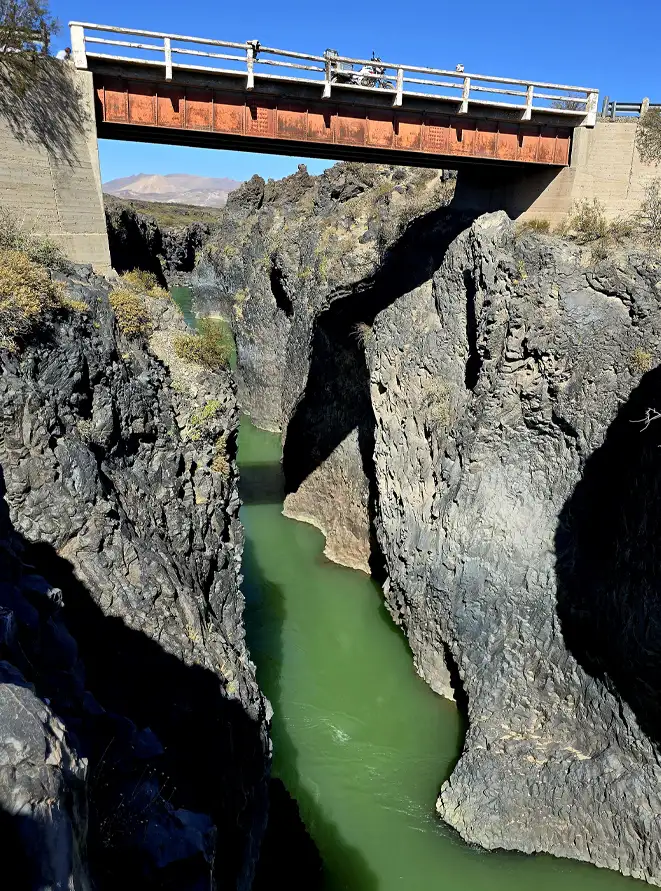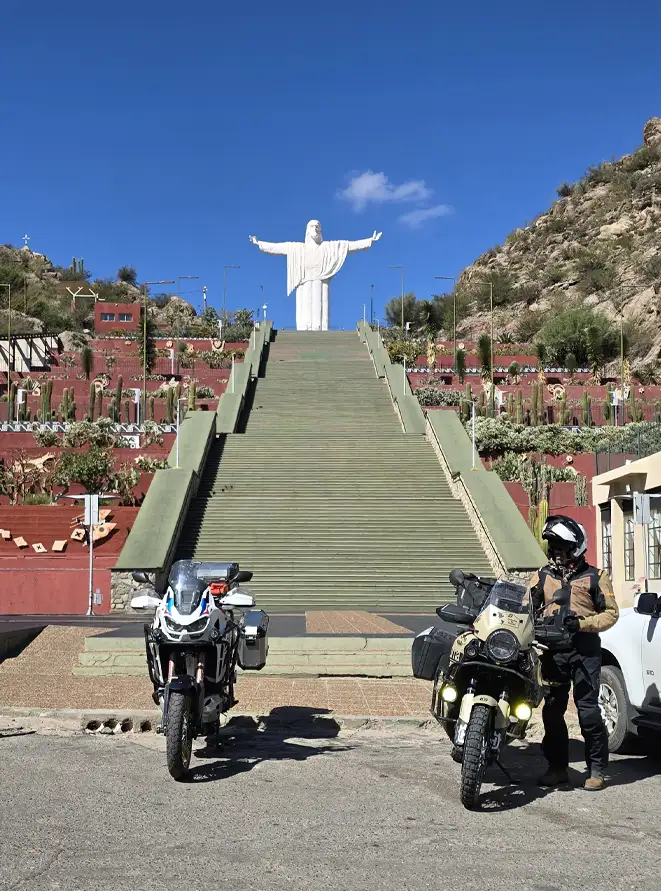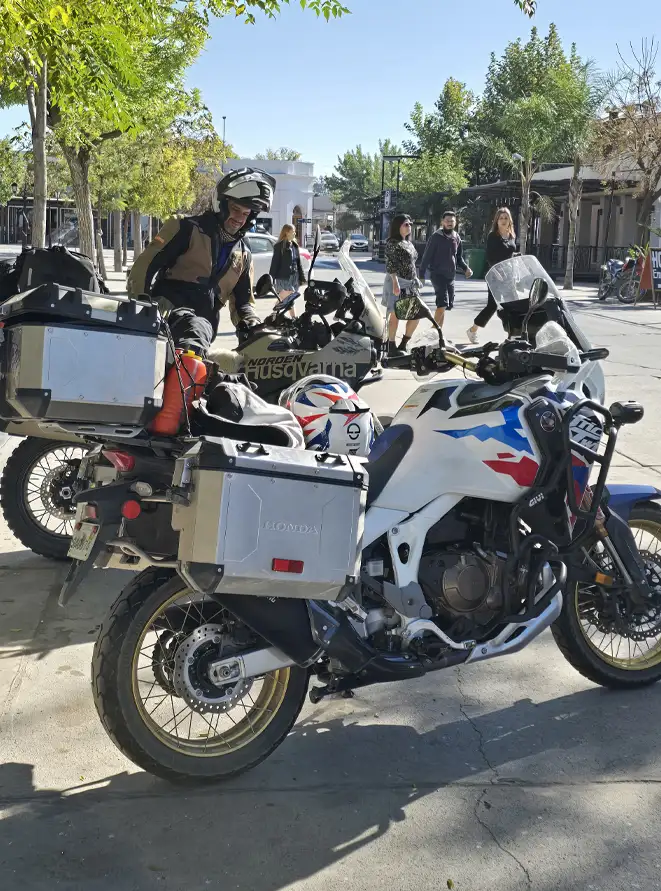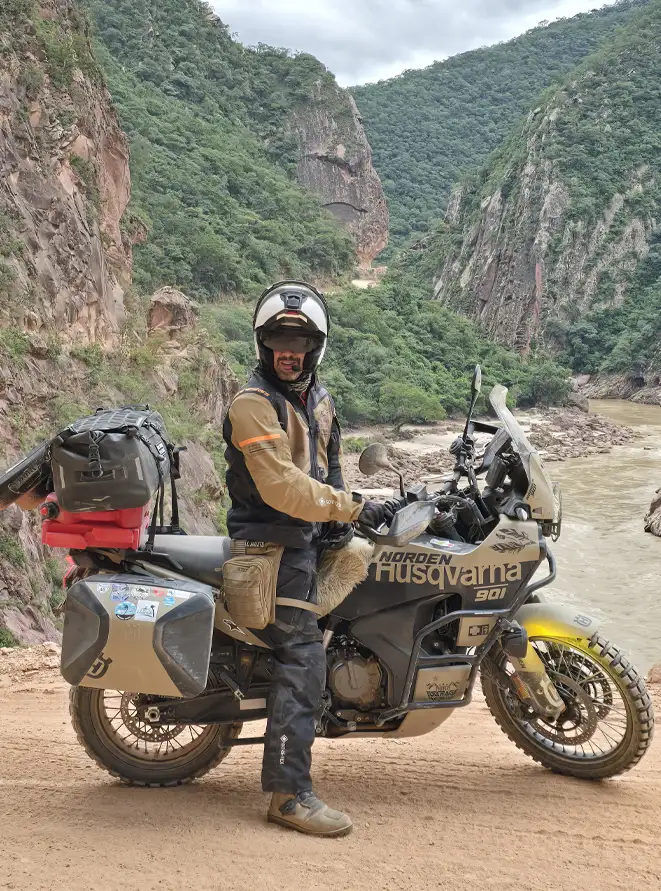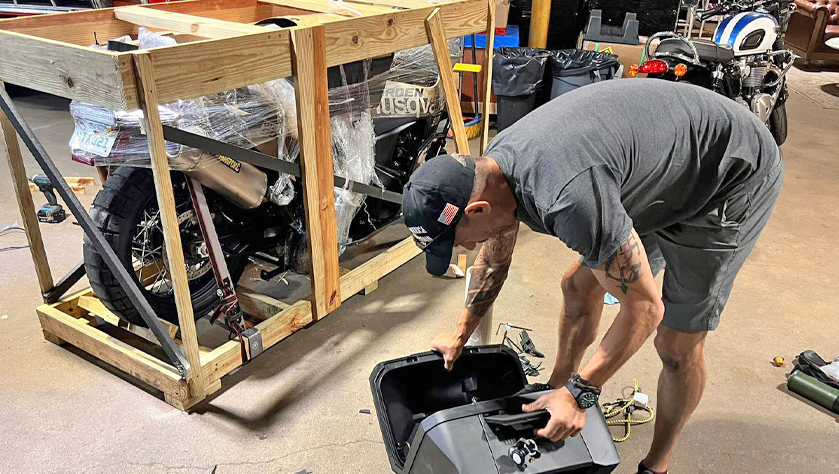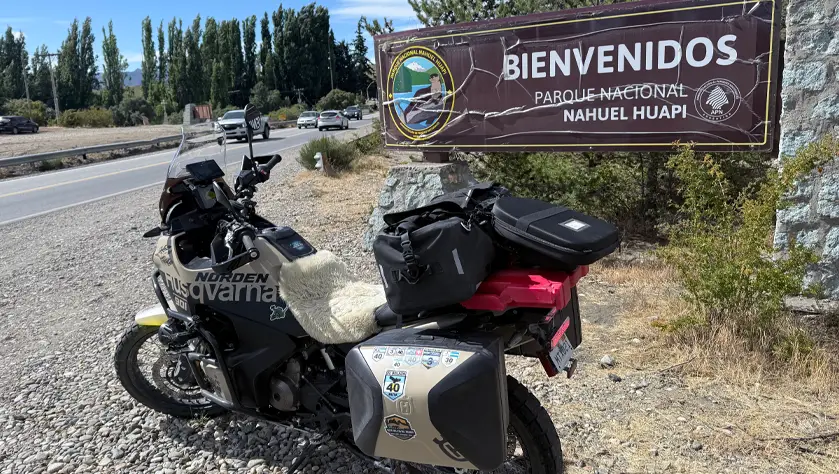Day 1: Neuquén – Chos Malal
The journey began as soon as we landed in Neuquén. Colo picked us up at the airport and took us straight to a friend’s workshop where our bikes were waiting: clean, tuned, and ready to ride. We had lost a day due to a transport strike in Argentina, so we hit the road that very afternoon to make up for lost time.
We headed north on the legendary Ruta 40. It was a long day—we had left Buenos Aires at dawn and were riding by noon. We arrived in Chos Malal, a town we didn’t know, but which welcomed us warmly. Friendly people, great food (except at Tauro), and a mountain landscape that hinted at the adventure ahead. We closed the night with a well-earned dinner and deep sleep.
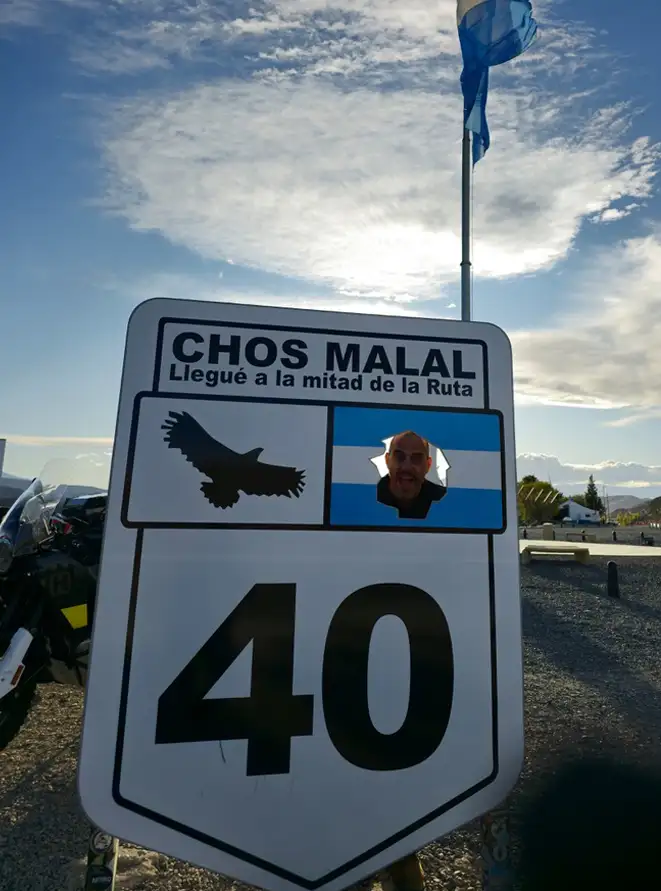
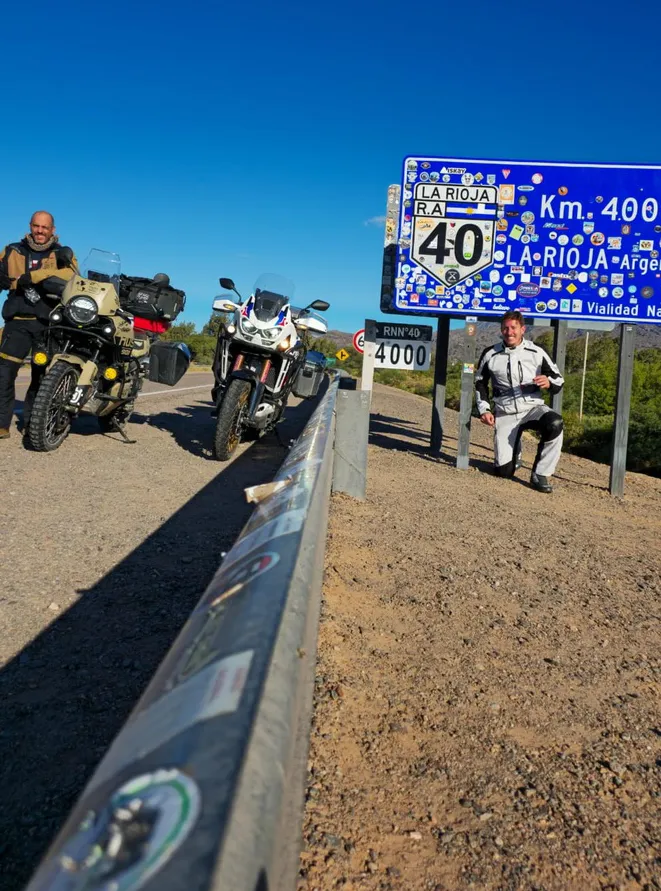
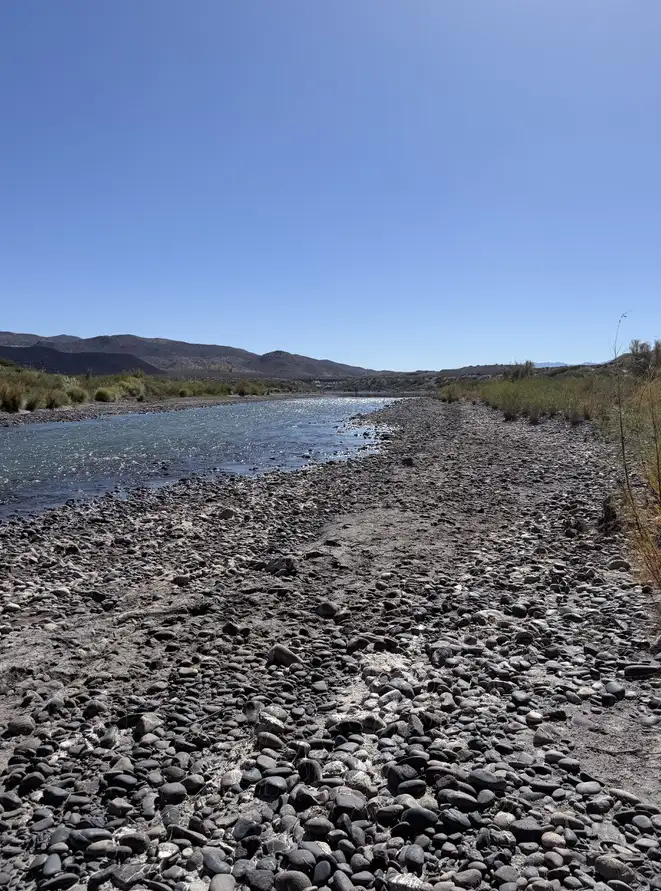
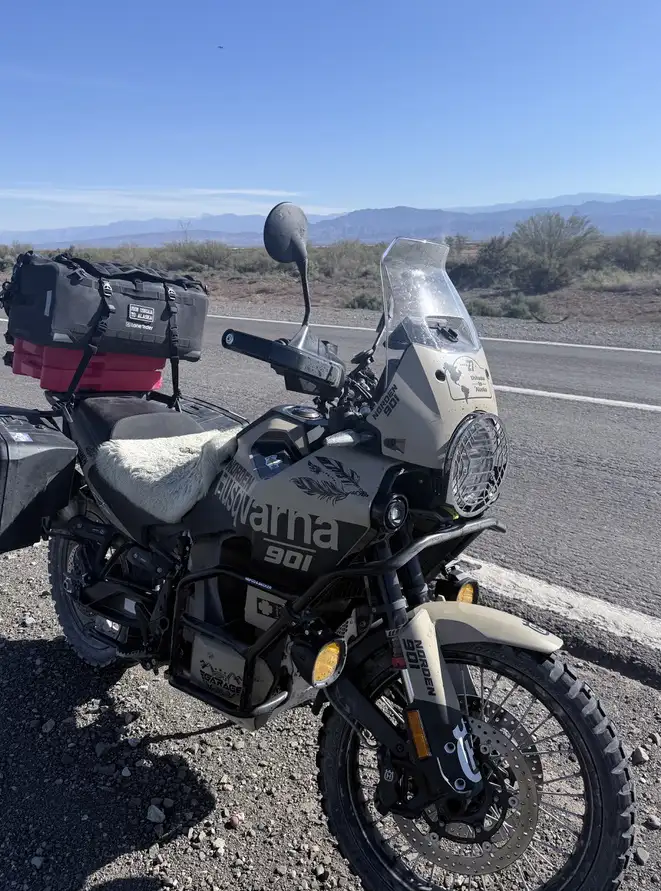
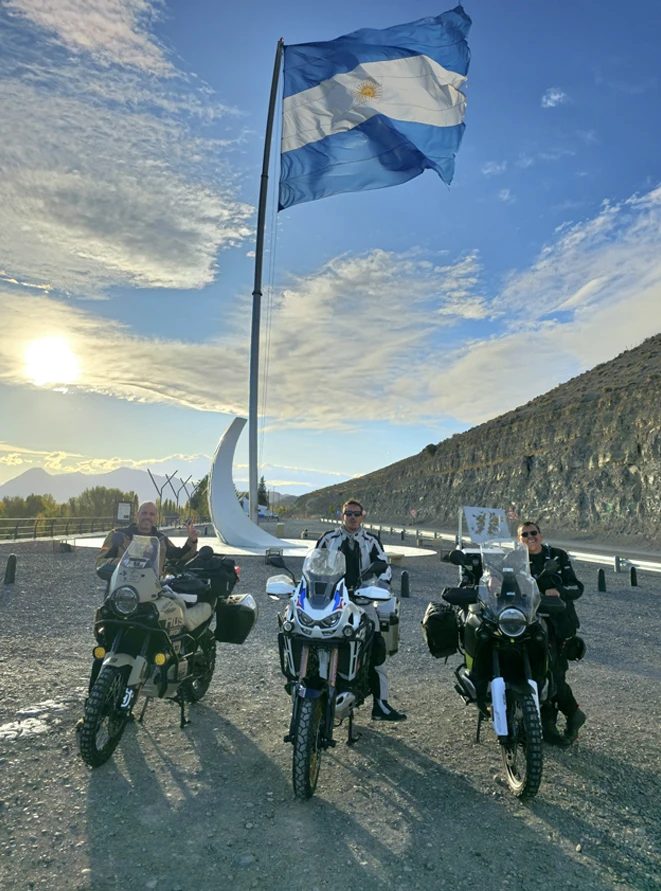
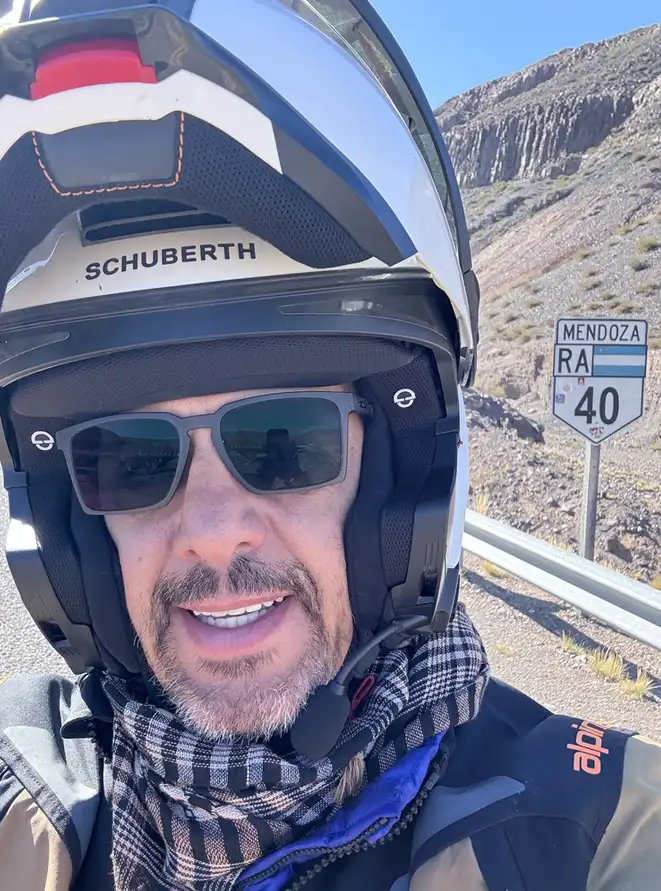
Day 2: Chos Malal – San Rafael (Miss Olivos)
We set off early, continuing along Ruta 40. The landscape became drier, and the road rougher. After passing Laguna Coipo Lauquén, the asphalt disappeared completely. Santi was ahead, and Gastón and I paused to assess the terrain. That’s when we met Francisco, a cyclist who warned us we had over 70 km of gravel ahead.
We let some air out of the tires for better grip, and pushed forward. It was a tough, fun, and tiring stretch. I reached Malargüe and found Santi already fueling up at the station. We were recommended a grill and went to grab lunch.
More than an hour passed with no word from Gastón. Eventually, he arrived walking slowly and clutching his hand—he had taken a fall on the gravel. At first it seemed minor, but the bike was banged up and his hand was clearly hurting.
We continued to San Rafael, where we stayed at Miss Olivos, a boutique lodge nestled among olive groves, with its own olive oil production. Silvana, Marina, and Roxy, founders and owners of Miss Olivos, welcomed us warmly. The evening closed with white wine-braised beef, a full moon, and a fire under the stars.
Day 3: San Rafael – San Juan
Gastón went out to test his hand on the road. We had lunch in Mendoza City, and he made the call to return to Buenos Aires to recover. It was the closest point for him to head back, and he planned to rejoin us further north.
Santi and I continued to San Juan, where we reviewed our plan: we had to reach Santa Cruz by Friday for a special KTM Bolivia event. A lot of kilometers still lay ahead.
Day 4: San Juan – Santa María (Catamarca)
This stretch was marked by the countless dips along Ruta 40, built to handle seasonal floods. Luckily, they were dry. This part of the country winds between low hills, adobe homes, free-roaming donkeys, and small farms. We stopped for lunch in Chilecito, La Rioja, a mining town with a rich railway history. There we met Omar, a cyclist friend of Esteban who stopped mid-training to give us excellent tips.
We passed through Tucumán—lush and lively—and ended up in Santa María, Catamarca. It’s a rustic little town without conventional hotels, but known for welcoming travelers. Ada hosted us in her home and recommended a local place with unforgettable empanadas.
Side note: We couldn’t agree on whether the best empanadas were from Catamarca, Tucumán, or Salta. But one thing was clear—they were far superior to the ones we had in San Martín de los Andes. These were homemade, with hand-folded dough and flavorful fillings. A true northern delicacy.
Day 5: Santa María – San Salvador de Jujuy
We started early, knowing it would be a long day. We reached Cafayate, a charming colonial town in the heart of the Calchaquí Valleys, surrounded by vineyards famous for Torrontés wine. After coffee in the plaza, we continued toward Cachi.


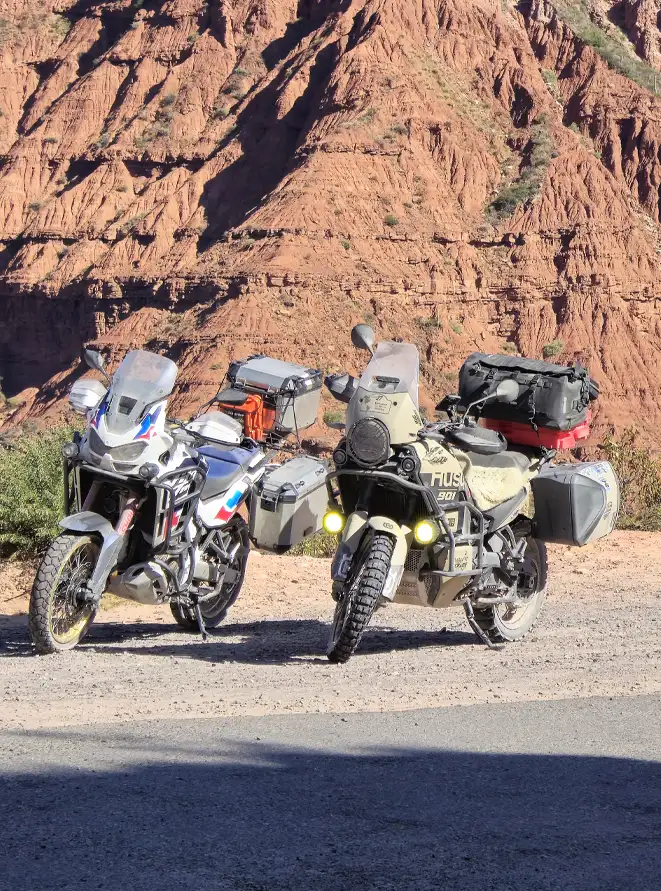
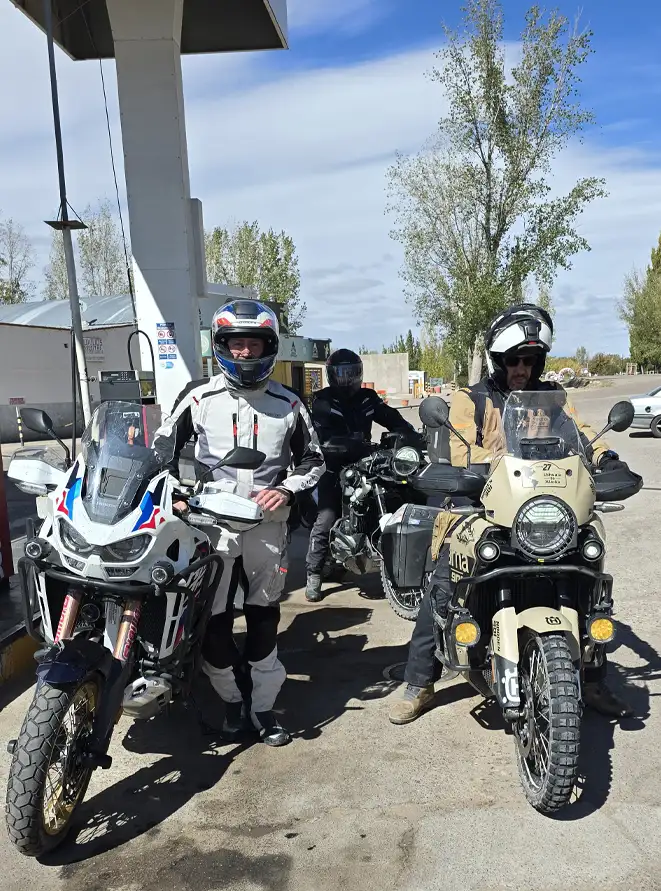
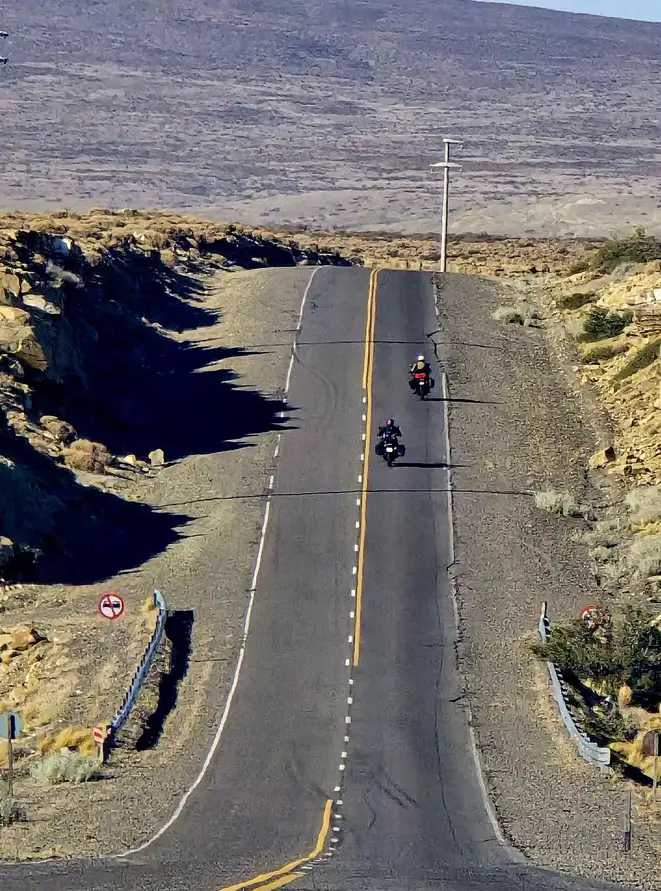
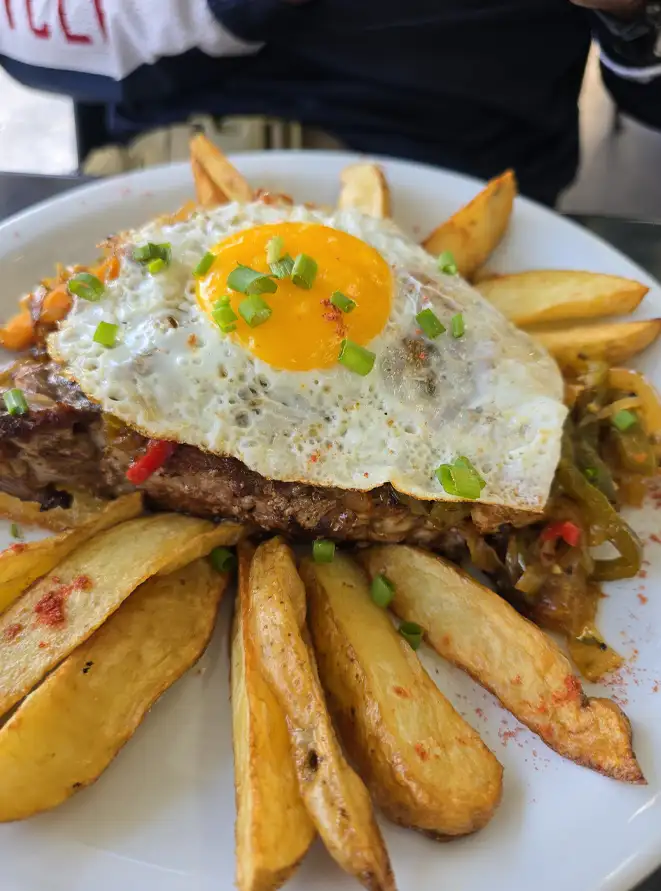
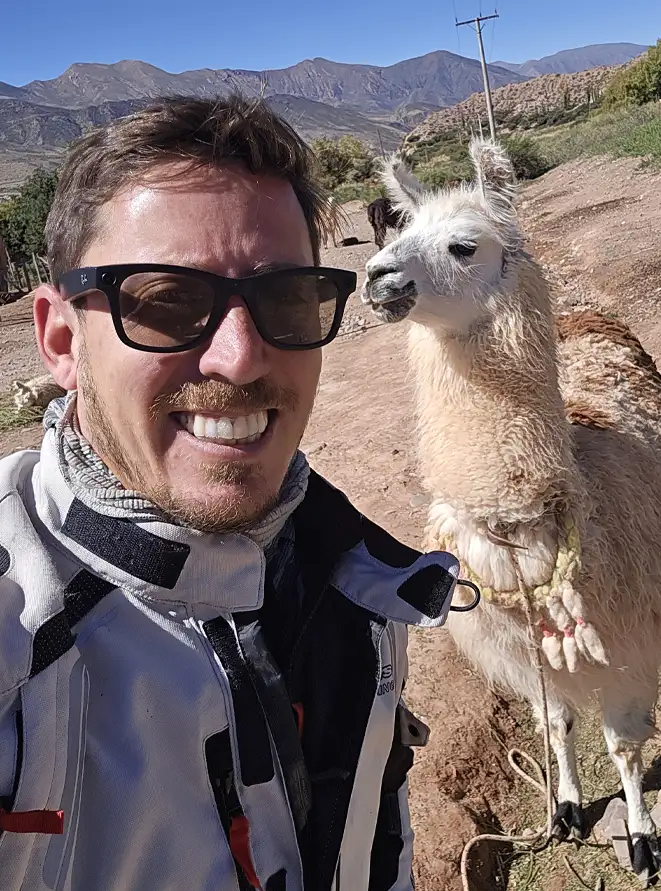

The route between Cafayate and Cachi is as stunning as it is tough. Loose gravel, sand, and winding paths offered breathtaking views: colorful hills, giant cacti, and dramatic cliffs. We also crossed the famous Recta del Tin Tin, a 19 km straight stretch originally traced by the Incas, located within Los Cardones National Park. Surrounded by towering cacti and endless skies, it’s the kind of place that forces you to stop and take it all in.
We thought a lot about Gastón—he missed this stretch, but also spared himself the beating. In Cachi, a picturesque town, we grabbed a quick lunch and admired the white church and cobbled streets. We pushed on to San Lorenzo, near Salta city, for tea and pastries at Hotel Las Moras, then continued to San Salvador de Jujuy for dinner and rest.
Day 6: Jujuy – Tarija (Bolivia)
This was our last full day in Argentina. We took Ruta 9, passing through the north’s iconic villages: Purmamarca, with its Seven-Colored Hill; Tilcara, known for its artisan market; and Humahuaca, frozen in time. Each stop was a postcard.
We reached La Quiaca before noon. Crossing the border took nearly three hours of paperwork and waiting. We entered Villazón, Bolivia, and decided to press on to Tarija, a mountain city tucked into the highlands. To get there, we had to tackle a steep gravel road that climbed to over 4,300 meters above sea level. The air grew thin, the vegetation changed, and the landscape turned lunar. A humbling ride.
Day 7: Tarija – Santa Cruz de la Sierra
One of the most intense days yet. We rode through what they call the green hell: jungle roads, deep mud, rocks, humid heat, and isolation. For hours we saw no one, just the sounds of nature and our engines.
Every curve was a challenge—and a reward. We finally arrived in Santa Cruz de la Sierra just in time for the KTM Bolivia event, organized by none other than Chavo Salvatierra. That evening, our friend Monín Camacho hosted us for dinner and conversation.
Day 8: KTM Bolivia Tour and Arrival at La Pajcha
Friday kicked off with uncertainty—we were joining a 40-rider adventure tour with KTM Bolivia. First hurdle: fuel. In Bolivia, foreigners often struggle to fill up, but after some station-hopping, we managed. We dove in, unsure what to expect—as usual.
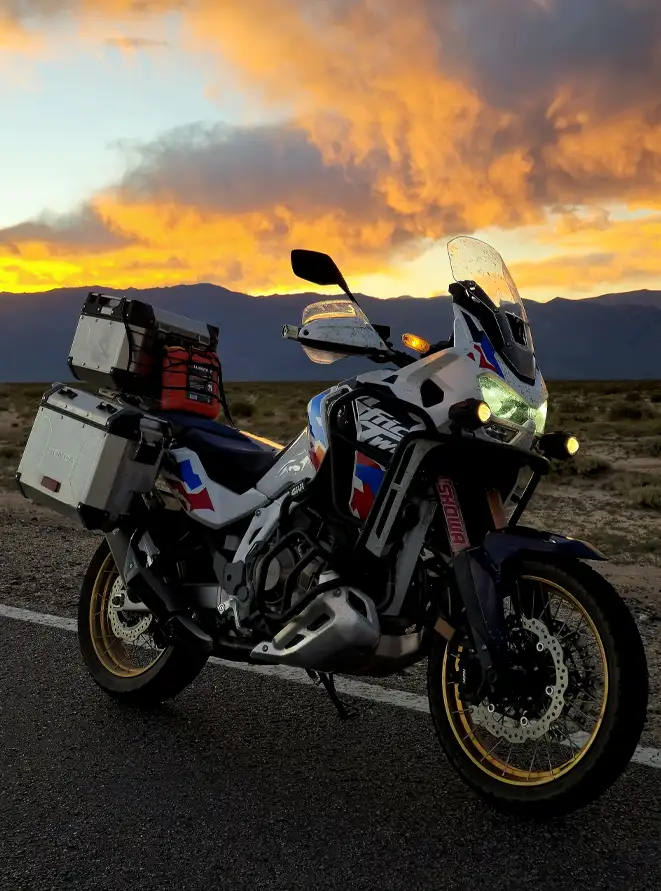
The first stretch was twisty mountain asphalt leading to a remote vineyard where we had lunch. From there, things got real: 50 km of rocks, dirt, and steep terrain led us to La Pajcha, a secluded waterfall deep in the jungle.
We took the shorter path and arrived first. KTM had set up an incredible base: tents, a bar, lights, DJ booth, and even a chef cooking paella in the middle of nowhere. We set up our tent, inflated the mattress (really missing that hotel bed), only for it to deflate midway through a cold, rainy night. We reinflated it by hand—twice.
As riders trickled in, we greeted them with cold fernet. We met amazing people: Ariel, Patrick, Bernardo, and many more. Rock band Los Salmones played live under the stars. We celebrated José’s birthday—father of organizer Juan—and the vibe was pure magic.
Final Stage: Santa Cruz de la Sierra The next morning, groggy and sore, we packed up and rode back the same challenging path, now muddier from the rain. It was a true final test.
Back in Santa Cruz, a hot shower brought us back to life. One last dinner with Monín, and we dropped the bikes at KTM for some well-earned TLC.
The stage was complete.
The adventure doesn’t let up. And neither do we.

